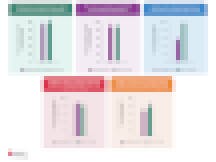AI-driven instruments might sign the combination of expertise into studying in profound methods; nonetheless, the lengthy trajectory of edtech has not but modified the basic organizing construction between trainer and scholar. Academics—with the overwhelming majority of colleges nonetheless organized as one trainer for each 15 to 35 college students—mediate college students’ classroom experiences in myriad methods. Though alternatives for college students to work independently utilizing educational studying methods clearly exist in most contexts, the frequency of their use, for what functions and for which college students range broadly.
As a living proof, Challenge Topeka featured an automatic essay scoring device that supplied grades 6–8 college students with individualized line-level suggestions on argumentative essays responding to 6 totally different prompts. Every immediate provided aligned info sources, and educational supplies and different trainer helps accompanied the device. The Challenge Topeka rubric described college students’ argumentative writing alongside 4 dimensions: Declare and Focus, Help and Proof, Group, and Language and Fashion, at 4 efficiency ranges (Rising, Growing, Proficient, Superior).
Constructing on our analysis on lecturers’ approaches to utilizing AI within the classroom and how lecturers’ scoring of argumentative papers differed from that of the automated essay-scoring device, this companion piece illustrates the experience lecturers drew on to disclose their understanding of the writing rubric, the methods they used it and the extent to which the rubric captured or missed what they see and anticipate from their college students’ argumentative writing. Academics’ views on the rubric underscore the questions we should proceed to ask as edtech merchandise embed and evolve logics that cut back—slightly than improve—transparency in how the expertise facilitates scholar studying.
Throughout three implementation waves (winter 2020, fall 2020 and faculty yr 2021-22), nearly all lecturers utilizing Challenge Topeka agreed that the scale the AI device scored have been acceptable and agreed with the scores their college students’ writing obtained. Nonetheless, a majority additionally informed us that college students have been confused about how to answer the suggestions. The lecturers wanted to assist college students interpret and apply the suggestions and supply extra holistic suggestions. (See Exhibit 1.)
Exhibit 1: Academics’ Perceptions of Challenge Topeka Automated Essay Scoring

Discussions of the rubric (as a part of a calibration course of for lecturers to attain scholar work samples) revealed the crucial methods during which lecturers used their experience to emphasise key parts of the rubric and body suggestions to college students. Under are highlights of lecturers’ views on three of the 4 rubric dimensions.
Declare and Focus. Proficient definition—“The essay introduces a transparent declare primarily based on the subject or textual content(s). The essay principally maintains a deal with the aim and process however might not develop the declare evenly all through the essay whereas addressing the calls for of the immediate.”
Whereas the AI device appeared to offer suggestions on whether or not college students wrote particular sentences that posed a single declare that they might then substantiate, lecturers honed in on coherence all through the paper. Past in search of a declare acknowledged in the beginning of a paper, one trainer elaborated: “[I] keyed in on ‘not developed evenly’ [from rubric level] all through—it’s not simply the assertion [claim] itself, however [it’s] referring to coherence of the entire essay. So we shouldn’t simply be a selected assertion [as the claim], however we’ve to have a look at the entire essay and whether or not or not the entire essay helps that declare.”
Help and Proof. Proficient definition—“The essay makes use of clear, related proof and explains how the proof helps the declare. The essay demonstrates logical reasoning and understanding of the subject or textual content(s). Counterclaims are acknowledged however is probably not adequately defined and/or distinguished from the essay’s central declare.”
Academics underscored the necessity for college students to have the ability to establish and apply dependable proof to their argument, significantly on whether or not the scholar might clarify why the proof they used helps the declare or addresses a possible counterclaim to their argument: “What does [the evidence] say? Is the proof dependable? Is it related? If sure, [students] even have to elucidate it. Don’t simply give a abstract [of the evidence].” In different phrases, lecturers needed to see authentic writing from the scholar that defined why they have been utilizing the proof they selected as a very powerful side of this dimension being scored.
Group. Proficient definition—“The essay incorporates an organizational construction with clear, constant use of transitional phrases and phrases that present the connection between and amongst concepts. The essay features a development of concepts from starting to finish, together with an introduction and concluding assertion or part.”
Academics pointed to how Group strengthened Declare and Focus as associated dimensions. Notably with decrease grades emphasizing tips on how to write a well-crafted paragraph, college students don’t essentially have adequate follow in constructing multi-paragraph items. One trainer defined, “College students write well-structured paragraphs, however we wish them to attach the paragraphs. The connection—the connection—must be there. You is likely to be proficient at writing single paragraphs, however to be proficient at writing an essay, you want to transition from paragraph to paragraph.”
That relationship shouldn’t be adequately established with transition phrases, as many college students are taught. One other trainer shared, “[W]e are hung up on transition phrases, however the rubric is asking for extra. The concepts are transferring however not persistently. If I take your paragraph in isolation, does it connect with your declare? That’s how I take a look at group. The connection between and amongst concepts—how do you train that?” In essence, lecturers sought a logical movement in the way in which college students organized their arguments.
What lecturers emphasised of their scoring illustrates the load they place on totally different points of the rubric as probably the most crucial expertise of argumentative writing. The purpose shouldn’t be that what lecturers search for differs from what the AI device appears for—that distinction could also be inevitable, particularly with machine studying, the place choice guidelines mutate over time. The purpose is that lecturers have experience and apply skilled judgment that integrates data of writing, instruction, college students, relationships and tradition in tacit and delicate methods not simply captured—at the very least proper now—by AI instruments. We’d like edtech that builds on an understanding of how lecturers’ experience mediates and enhances the affordances of technology-driven studying options, instruments that replicate skilled lecturers’ intersecting data of content material and college students and their expectations of what college students are able to reaching.
